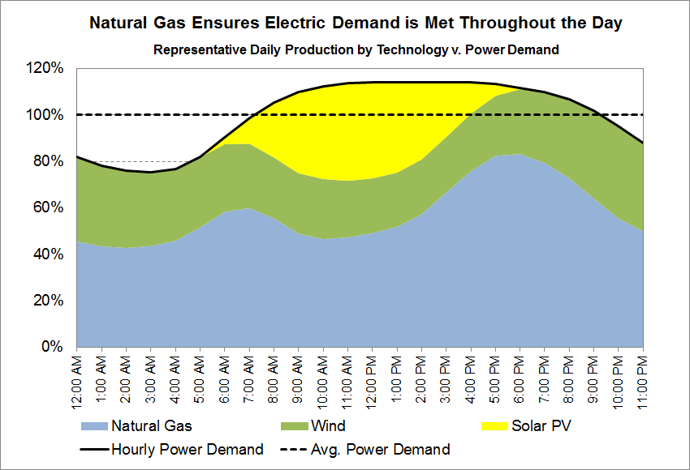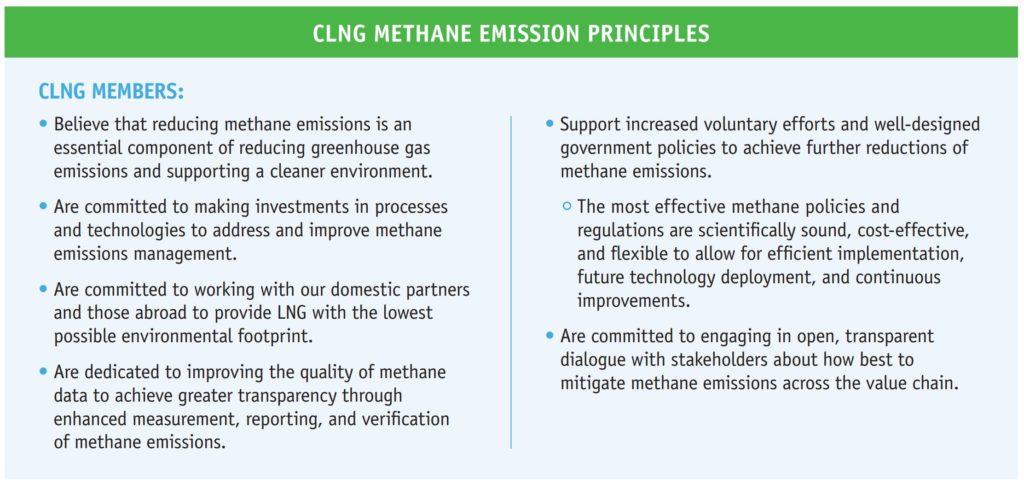Natural gas, including natural gas transported as LNG, is an essential building block of a cleaner energy future for all, today and tomorrow.
Today we are helping the environment by reducing the world’s carbon emissions and partnering with renewables and remain committed to the goals of the Paris Accords and COP27.
As leaders in the natural gas industry, we are working toward an even cleaner tomorrow. As our world evolves with the energy transition, we look forward to showcasing LNG and its contribution to a cleaner future.
Our Plan:
- Partnering with Renewables
- Reducing Worldwide CO2 Emissions
- Reducing Worldwide Methane Emissions
- Reaching Climate Goals with Natural Gas & LNG
For a full timeline on how CLNG members are helping the world reach its climate goals check out our Reaching Climate Goals with Natural Gas & LNG (Fall 2021) document and video.
Learn More
Natural gas can quickly power up to make electricity if the weather temporarily doesn’t cooperate with renewables.
Together with renewables, we have driven U.S. emissions to their lowest points in more than 25 years.

Learn more about what we are doing to Partner with Renewables.
The 2016 National Bureau of Economic Research study: “Bridging the Gap: Do Fast Reacting Fossil Technologies Facilitate Renewable Energy Diffusion?” concluded that:
- “We show that a 1% percent increase in the share of fast-reacting fossil generation capacity is associated with a 0.88% percent increase in renewable in the long run. These results are robust to various modifications in our empirical strategy …”
- “Our analysis points to the substantial indirect costs of renewable energy integration and highlights the complementarity of investments in different generation technologies for a successful decarbonization process.”
For more on how CLNG members are helping the world reach its climate goals check out our Reaching Climate Goals with Natural Gas & LNG (Fall 2021) document.
As nations look to reduce their emissions and improve air quality, increased natural gas and LNG consumption will be a part of creating a cleaner energy future for all.
Increased use of natural gas to generate electricity has contributed to billions of tons in carbon dioxide (CO2) savings in the United States. In fact, the U.S. Energy Information Administration attributes 25-year lows in CO2 emissions to greater use of natural gas along with renewables. Because of natural gas, the United States has led the world in CO2 reductions.
LNG in many markets is replacing higher emissions fuel sources such as fuel oil, coal, wood, and animal waste. The National Energy Technology Lab conducted an indepth 2019 update of an earlier analysis of emissions from U.S. LNG exports and concluded that LNG exports from the United States resulted in reduced emissions abroad, particularly in regions that currently rely on dirtier fuels.
Cheniere is providing its LNG customers with greenhouse gas (“GHG”) emissions data associated with each LNG cargo produced at the Company’s Sabine Pass and Corpus Christi liquefaction facilities. The Cargo Emissions Tags (“CE Tags”) are designed to enhance environmental transparency by quantifying the estimated GHG emissions of LNG cargoes from the wellhead to the cargo delivery point, and are expected to be provided to customers beginning in 2022.
For more on how CLNG members are helping the world reach its climate goals check out our Reaching Climate Goals with Natural Gas & LNG (Fall 2021) document.
Methane, a component of LNG, is a greenhouse gas that contributes to climate change. CLNG and its members agree that reducing methane emissions is essential to a low carbon future.
Even as the LNG industry seeks to reduce methane emissions at every opportunity, U.S. LNG remains cleaner than most other dirtier hydrocarbons. Learn more about CLNG’s methane principles here. The LNG industry as a whole is committed to reducing methane emissions through innovative technologies at the facility, in the field, as well as in the transportation of the LNG.
The LNG industry as a whole is committed to reducing methane emissions through innovative technologies at the facility, in the field, as well as in the transportation of the LNG.
Cheniere is providing its LNG customers with greenhouse gas (“GHG”) emissions data associated with each LNG cargo produced at the Company’s Sabine Pass and Corpus Christi liquefaction facilities. The Cargo Emissions Tags (“CE Tags”) are designed to enhance environmental transparency by quantifying the estimated GHG emissions of LNG cargoes from the wellhead to the cargo delivery point, and are expected to be provided to customers beginning in 2022.
For more on how CLNG members are helping the world reach its climate goals check out our Reaching Climate Goals with Natural Gas & LNG (Fall 2021) document.
Through bold steps and technological innovation, natural gas and LNG are working to enable a clean energy future for all.
This is what the path forward looks like, decade by decade. For a full timeline on how CLNG members are helping the world reach its climate goals check out our Reaching Climate Goals with Natural Gas & LNG (Fall 2021) document.
